Which Toyota Car Is Best In Snow?

So what are the best vehicles in the snow? Here are some things to consider. Winter driving can be a bit of a daunting task, especially if you aren’t fully equipped with the proper tools. From winter tires to all-wheel drive to the vehicle itself, Toyota offers everything you need to best navigate any snow, sleet, or freezing rain.
If you’re in the market for a new Toyota, consider the following models, as they offer plenty of performance all year round, including winter weather.
Toyota RAV4
The Toyota RAV4 is designed to go on or off the road with available all-wheel drive and a multi-link rear suspension. Along with Toyota Safety Sense 2.5 on the 2023 model, the Toyota RAV4 includes the tech you need for increased peace of mind in stressful driving environments like inclement weather.
As part of standard Multi-Terrain Select, the 2023 Toyota RAV4 features a SNOW mode, which increases traction in a given scenario. The system is designed to sense slippage and regulate wheelspin by automatically adjusting the engine throttle, brakes and drive-force distribution. In turn, this helps maximize driving performance on snowy and slippery roads.
The multi-link rear suspension in the RAV4 also enhances handling and control overall, using the vehicle’s natural body rigidity in order to keep the traction steady. The vehicle’s long, wide stance also promotes responsive handling, providing a smooth and confident ride throughout.
Toyota 4Runner
Another Toyota that is built for the tough terrain ahead, the 2023 Toyota 4Runner includes automatic modulation for the throttle and brakes with the advanced available Crawl Control (CRAWL) system.
The available electronic locking rear differential evenly distributes power to both rear wheels while the available Multi-Terrain Monitor helps increase awareness of any bumps or potential skids along the way.
The 4Runner offers nine inches of ground clearance and plenty of visibility with large, vertical windows and LED headlights. Utilize low beams, high beams and fog lamps to help navigate the snowy terrain, allowing for increased visibility in a snowstorm.
Toyota Highlander
The Toyota Highlander is revved up and ready to go with a new 2.4-liter turbo powertrain on the 2023 model. Add Multi-Terrain Select to the Highlander to keep you in control with ever-changing road conditions.
In addition to SNOW mode, the Highlander features an anti-lock braking system, Electronic Brake Force Distribution and Traction Control to help keep peace of mind in inclement weather. The anti-lock braking system prevents your wheels from locking up from braking too often, analyzing the rotation of each wheel, and activating when one wheel stops rotating.
Electronic Brake Force Distribution regulates the brake pressure on each individual wheel, and works together with the anti-lock braking system. Meanwhile, Traction Control detects any wheel that is spinning over a slippery surface, and enables the brake on any given wheel.
Toyota Tundra
As evident by its name, the Toyota Tundra is surely ready to perform with the available electrified i-FORCE MAX hybrid powertrain, iFORCE twin-turbo V6 engine option and a maximum towing capacity of up to 12,000 pounds.
If you’re looking to make the most out of your Toyota Tundra in snow, consider the off-road models, which include an upgraded suspension, off-road tires, and skid plates. These, along with 8.5 inches of ground clearance, will help protect you and your vehicle in harsh snowy conditions.
People may not envision a pickup truck when they think of Toyota, but the Tundra goes to show how versatile and boundary-breaking the automotive brand can be.
Toyota Venza
The Toyota Venza utilizes advanced hybrid technology to achieve 219 horsepower, and class-leading fuel economy. Also featuring Electronic On-Demand All-Wheel Drive, the Venza allows you to navigate through roadways safely and efficiently.
The available Panoramic View Monitor helps you check your surroundings via four total cameras – one on each side of the vehicle. If you are looking for a compromise between snow capability and hybrid efficiency, the Toyota Venza could be your go-to vehicle.
Toyota Sienna AWD
The Toyota Sienna has become iconic for its spaciousness and ever-capable performance. When it comes to snow, the Sienna is no different. Trim levels like the Sienna XSE feature a sport-tuned suspension, maximizing responsiveness and preparing you for slippery conditions.
The all-hybrid powertrain allows you to keep up with efficiency while staying winter-ready, with all-wheel drive enhancing your confidence on a given road. If you’re caught in a snowy situation, the sturdy body of the Sienna and about half a foot of ground clearance let you plow through light snow with ease.
Toyota Camry AWD
Toyota innovation is truly a wonder, and the Toyota Camry shares snow-performance technology with the bigger SUVs and trucks. With all-wheel drive enabled, the Camry is equipped to sense any slipping when driving through snow or rain. Sending up to half of the vehicle’s torque capacity to the rear wheels, your Camry smartly grips the road when you need it most.
Enjoy a sport-tuned suspension to perform on a daily basis, even without snow in the mix. While it may not be as formidable in size and stature, the Toyota Camry is prepared to keep you and yours throughout winter, thanks to the ever-impressive technology of Toyota.
Shop for a New Toyota in Madison, WI at Smart Toyota
If you’re considering a new vehicle, schedule a test drive with one of our aforementioned models. If you have any questions about a new or used vehicle, be sure to contact us. We’re happy to help.
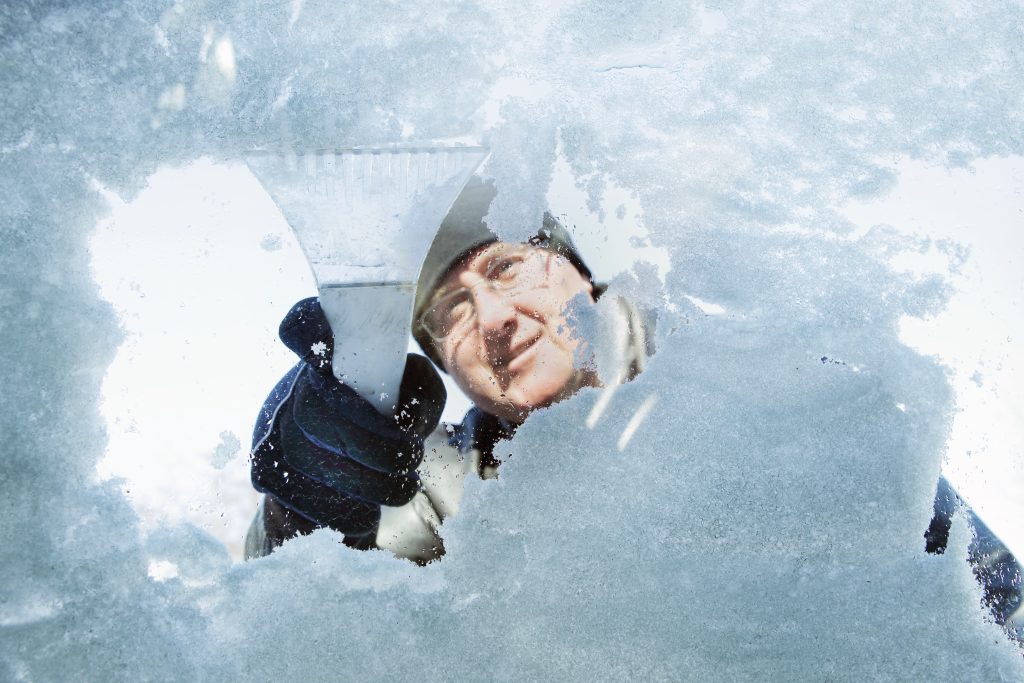
Vehicle winterization – whether this will be your first winter in Wisconsin, or you’re born and raised in cheese-country, it’s something every Wisconsinite must prepare for. The morning temperatures are dipping below freezing, highs are lucky to break freezing, accumulating snow will soon be piling up, but have you winterized your vehicle? Thankfully, most of us only need to brave these elements for brief periods at a time, usually as long as it takes to go from a heated building to one’s vehicle and back into another heated sanctuary. But if the freezing temps, gusty winds, and icy snow in the Madison area are hard on you for the few moments you’re out, think about the brutal beating your car takes.

Your vehicle may have been sitting out for hours. The last thing you want to do is trudge over the frozen landscape, reach your vehicle, turn the key in the ignition, and – oh no! – all you hear is a hideous series of click-click-clicks, groans, and exhausted whirs. The engine isn’t turning over. Why didn’t you winterize your ride!?
Luis Roman, Assistant Service Manager at Smart Motors in Madison, says there’s no time like the present to start getting your vehicle in shape for the unpredictable winter season. He says every year he is asked by multiple people what the most important factors are when preparing a vehicle for the challenges winter can pose. And with the Farmers’ Almanac predicting a snowy winter with colder than normal temperatures, it is probably a good idea to take note of the winterization check list he shares with others.

“The top item on any vehicle winterization list is fairly obvious,” he says. “It’s having a quality, fully charged, and undamaged BATTERY.”
Roman says it takes more power to start a car in the winter because battery power decreases as the temperature drops. If your battery is already having problems, your risk of breaking down or becoming stranded increases. It is recommended to have a battery with at least the vehicle manufacturers CCA rating, most hybrids will have 12 volt batteries under 400 CCA which are fine for that application
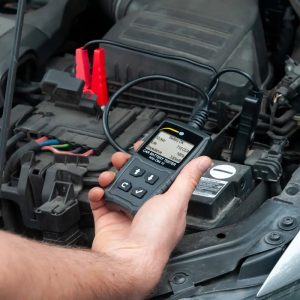
The second and third items on Roman’s list are TIRES and BRAKES. Thankfully the cold doesn’t necessarily harm these components, but it doesn’t hurt to make sure they are in the best condition to handle the hazards of winter driving. He says most drivers don’t think about their tires until they have to swerve or brake suddenly – often with serious consequences. According to the National Highway Traffic Safety Administration, about nine percent of vehicle crashes are tire-related and could be prevented with proper tire maintenance.
“All-season tires are what I recommend to most drivers,” says Roman. “They’re great for people with short commutes and little reason to veer far from the beaten path.” According to Roman, all-season tires are also very convenient, as they don’t need to be swapped out with any other set of tires seasonally.

“When people need to commute to and from work from a rural area, I almost always say they should go with snow tires,” says Roman. “They can swap out with their regular tires in early November or so. And having two sets of tires puts less wear and tear on both pairs, so you can have them for quite a long while.”
Top Five Best Winter Tires
- Michelin X-Ice Xi3
- Bridgestone Blizzak WS90
- Dunlop Winter Maxx WM02
- General AltiMAX Arctic
- Continental Winter Contact TS830
Shop for tires for your for your vehicle.
The fourth item on Roman’s list is WINDSHIELD WIPER BLADES. He says that there are blades specifically made for winter driving, and they could really be a lifesaver.
“You really never know what winter is going to throw at you, so it’s best to be prepared,” he says. “It could be freezing rain, wintery mix, wet snow, or the car in front of you splashing your windshield with the dirty, salty slush on the road. Windshields really take a beating in the winter.”
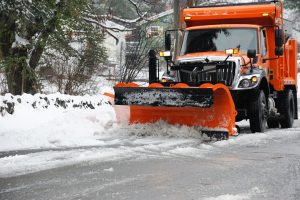
The amount of debris that could potentially block your view needs to be cleared for you to be able to navigate the winter roads safely. Roman says he constantly hears about harrowing journeys drivers make with bad wipers that just smear the slush around instead of clearing it off the windshield. Or there are the wipers that don’t make contact with the windshield at all! These wipers need to be replaced for your safety and for the safety of others.
“Wiper blades are inexpensive, and many people can install them themselves,” he says. “So please check yours before the snow flies. The last thing you want to do is drive blind.”
Roman says there are a few other items that you might want to have a professional check for you before winter is in full swing:
What Should I Have My Mechanic Inspect On My Car Before Winter?
• The cooling system – Your automotive service technician can tell you what antifreeze should be used and the appropriate coolant-to-water ratio to avoid potential freezing.
• Belts, hoses, spark plugs, wires and cables – While they can go bad at any time, if they do in the winter, you could be stuck in the cold for an unfortunately long period.
“These areas might seem small compared to the engine or fuel intake system, but without the small things aiding the large items, your vehicle will not function properly,” he says.
Aside from vehicle winterization, Roman says for safety reasons all motorists should have a cell phone and a phone charger handy, and drivers shouldn’t let their gas go much below a half tank in the wintertime, either. Plus he recommends keeping a worst-case-scenario-kit in your vehicle, filled with the following items:
What Items Should I Keep In My Car During Winter In Wisconsin?
• A blanket
• Several heavy duty garbage bags: Can be a makeshift rain coat; keep your clothing off the wet ground when changing a tire, or to collect wet items.
• A shovel
• Kitty Litter – which can help aid in traction
• Jumper cables or a battery-powered portable booster
• Flashlight or emergency light
• First aid kit
• Food
• Jack and spare tire: Know how to use them — practice if necessary.
About Smart Motors
Smart Motors was founded in 1908 by O.D. Smart and is one of the nation’s oldest automotive dealerships, is the mid-west’s largest hybrid dealer and one of Wisconsin’s largest volume Toyota dealers. Located at 5901 Odana Road, Smart Motors is Wisconsin’s only two-time President’s Cabinet Award recipient from Toyota Motor Sales for superior customer service & sales volume. For more information, check out their history.
Deer are on the Move. Stay Alert & Stay Safe.

They see you, but do you see them? According to State Farm insurance, as a Wisconsinite with a license to drive, you have a 1 in 57 chance of hitting a deer this year. Madison’s current population is roughly 277,000. That means more than 475 drivers who reside in the capitol city are going to have a collision with a deer sometime this year, and chances are it will be sooner than later.
Stay Alert
From now until December it is mating season, which brings deer and other wild animals out in droves, oblivious to their own safety. It’s that time of year when 7,000 deer-vehicle accidents occur throughout the state. At any given moment, but mostly around dusk, a deer will come bolting out of nowhere and strike your vehicle with full force. It’s an unfortunate experience. And it’s one that is getting costlier.
“When a deer smacks into your car, they collide with significant force,” says James Anderberg, manager at Ball Body Shop. He says the Highway Data Loss Institute (HLDI) estimated that the average cost of November animal-strike claims between 2006 and 2019 rang in at $3,685 per claim. “But costs keep going up, and the supply chain is weak right now. Hitting a deer in 2022 is going to be quite costly.”

Ball Body Shop
Costly Repairs Continue to Rise
Anderberg says to fix the average collision has increased by 10 or 15 percent annually over the past few years mainly due to the increase in the price of obtaining parts. Labor, he says, has increased as well. The advanced features that are currently on vehicles to help keep drivers and passengers safe are another reason repair costs are on the rise. And while a driver’s comprehensive insurance coverage should absorb these costs, many drivers elect not to carry comprehensive and therefor have to pay out of pocket.
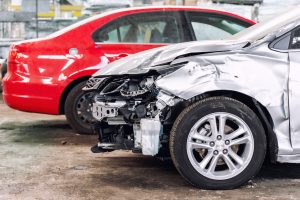
significant damage.
“Ironically, we’ve had to replace plenty of sensors, cameras, and other high tech safety features,” he says. “The things that are making vehicles safer for drivers, passengers and even pedestrians are ending up costing car owners more when it comes to impact with large animals.”
Collision Warning Systems Continue to be Refined
Anderberg says auto manufacturers are refining their collision-warning systems to help alert drivers to deer.
“For now, though, manufacturers are still working on a front crash prevention system that is calibrated to recognize deer or other animals. Of course this does nothing for when a deer wallops your vehicle from the side,” he says.
Anderberg acknowledges the situation is unfortunate, but assures Ball Body Shop has the expertise required to fix any deer crash incident.
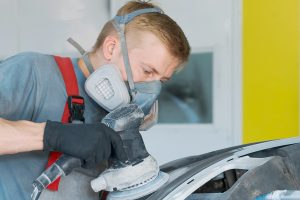
Prevention is the Key
To make sure the accidents never occur in the first place, Anderberg recommends avoiding high density areas where deer congregate after dark. Rural and suburban roads with zig-zagging stretches, long straightaways, uphill corners, sharp curves, dense culverts and low lighting can all overlap to create dangerous choke-points where accidents may occur. However, if you cannot avoid these areas during your daily commute, simply slow down. Use your vehicle’s high beams to help extend your visual light of sight.
Anderberg’s Tips for Motorists
• Always use caution when driving – especially at dusk and into the evening hours. When light levels are low animals are more active.
• Complacency equals negligence. Stay alert, focused and pay attention – be aware of the landscape and your environment.
• Deer generally travel in small groups. If one crosses the road, odds are there are others nearby that might attempt crossing. Watch for and recognize deer crossing signs.
• Sometimes it makes sense to hit the deer. This might sound callous, but if the choice comes down to hitting a deer or swerving over the center line, hitting the deer will cause less damage and reduces mortality rates.
• Be a speed limit driver, higher speeds reduce reaction times – going the speed limit increases travel safety.
• Keep your lights, brakes and tires well maintained for optimal performance.
• Buckle-up, don’t tailgate and remember to slow it down.
• Prepare for the unexpected.
About Ball Body Shop
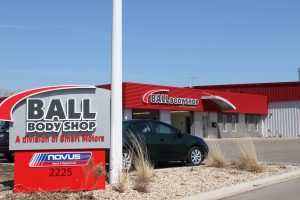
Ball Body Shop, the official body shop of Smart Motors, opened its doors in 1950 and provides the Madison area with customized, cost-effective auto-body services to all domestic and imported vehicle makes. Ball Body Shop has been voted “Best Body Shop” by the readers of Madison Magazine over the years. Ball Body Shop is located at 2225 Eagle Drive, Middleton WI. Phone #: 608.831.5944.

Smart Motors Toyota in Madison has observed Breast Cancer Awareness Month in a bold and eye-catching manner every year since 2010. Anyone looking at the night sky near Odana Road has witnessed a brilliant display in the form of a powerful rose-tinted glow. That’s because Smart sponsors a vivid pink light show in respectful observation of Breast Cancer Awareness Month. This eye-popping exhibit is their way of connecting with the community in a symbolic, entertaining and meaningful fashion for an exceedingly important cause.
As most people know, the color pink – especially pink ribbons – has become synonymous with breast cancer. But are you aware of the history behind this iconic symbol?
To set the stage, one has to go back to 1979 and the “Iran Hostage Crisis.” This is when the U.S. Embassy in Tehran was overtaken by supporters of the Iranian revolution. The Iranians – who were primarily college students – held 52 United States Diplomats hostage for 444 days.
Inspired by a Ribbon
Inspired by a 1973 number-one song, the wife of one of the hostages decided to literally “Tie A Yellow Ribbon Round The Ole Oak Tree” to make people aware of the touch and go situation her husband and 51 others were in. Suddenly yellow ribbons were tied around every kind of tree as her campaign took off throughout America.
The second such statement was during the AIDS crises. Activists opted for the color red, and looped the ribbon so it could be worn as a pin. The red ribbon pin was created to raise consciousness of the disease and also to represent those affected by it. The symbol went viral after it made its national television debut as presenters and nominees donned them at the 1990 Tony Awards.
Susan G. Komen for the Cure® has used the color pink in their logo since the non-profit’s inception in 1982. But it wasn’t until 1991 that the breast cancer awareness and fundraising organization began distributing pink ribbons to all breast cancer survivors and participants of the Komen New York City Race for the Cure®.
Then in 1992, Alexandra Penney, editor-in-chief of Self magazine, wanted to put the magazine’s second annual Breast Cancer Awareness Month issue over the top. She did this by creating a ribbon and enlisting the cosmetics giants to distribute them in New York City stores. And thus, the birth of the pink ribbon!
Pink Lights Bring Awareness
“With our pink light display, we are fortunate enough to have a real opportunity to increase awareness,” says Robert Jordan, Assistant General Manager at Smart Toyota. “We know that members of our staff and so many of our guests who use our services have been, in some way, touched by breast cancer. We want to be part of the cure.”

According to Komen.com, In 2022, it’s estimated among women in the U.S. there will be:
• 287,850 new cases of invasive breast cancer (This includes new cases of primary breast cancer, but not breast cancer recurrences.)
• 51,400 new cases of ductal carcinoma in situ (DCIS), a non-invasive breast cancer
• 43,250 breast cancer deaths
Mid-West Largest Display
The pink lights display at Smart Motors is believed to be the largest of its kind for an auto dealership in the Midwest. It generally takes three days to install the pink gels in their 149 exterior lights. They will have a total of 85 pink lights at the Toyota showroom and service facility location (5901 Odana Road), and there will be 64 additional lights shining pink at their new preowned facility across the street at 5710 Odana Road. It’s a first-place display for one of Wisconsin’s largest volume Toyota dealers, and the Midwest’s largest hybrid dealership. The pink aura will light up the west side throughout the month of October.

Smart Motors was founded in 1908 by O.D. Smart and is one of the nation’s oldest automotive dealerships, is the mid-west’s largest hybrid dealer and one of Wisconsin’s largest volume Toyota dealers. Located at 5901 Odana Road, Smart Motors is Wisconsin’s only two-time President’s Cabinet Award recipient from Toyota Motor Sales for superior customer service & sales volume. Dealership’s history.

Today’s Vehicle Safety Features
Ginger Blum, an employee with the Wisconsin Department of Motor Vehicles, is no stranger to what people have to say about the vehicle safety features that are equipped on many of today’s newer vehicles. But it wasn’t until a recent vacation to Orlando FL, she found out for herself just how powerful these life-saving technologies can potentially be.
“My 14-year old daughter and I had been planning a Disney vacation for a long time,” says Blum. “I wasn’t nervous about flying, but I knew once we landed we would need a car. I’d heard horror stories about Orlando traffic so the thought of driving in a foreign city alongside other clueless tourists had me a bit scared.”
Despite her trepidation, Blum did rent a car. She was told by the rental agent the car she was getting had “tons of safety features.” Blum assumed it meant anti-lock brakes, a car alarm and perhaps front and side airbags for both driver and passenger. She was in for a major surprise.
“I was shocked at what this car could do!” she says. “Just from our relatively short ride from the airport to the hotel, I first became aware of blind spot indicator lights in the side mirrors. Then at one point I accidently began to drift into another lane, but then I felt the steering wheel nudge me back into the center of my own lane! It was a little weird, but amazing.”
Another feature Blum encountered as she and her daughter made a day trip to the Gulf Coast was the dynamic cruise control, which adjusts the car’s speed to help the driver maintain a safe distance from the car in front of him or her.
“I know there were lots of other safety features that thankfully didn’t come in to play, but the ones that did made driving so much less stressful,” says Blum. “It made me want to immediately upgrade to a newer vehicle as soon as I got home.”
Vehicle Safety Sense
Justin Jackson, Sales Director here at Smart Motors in Madison says he not only hears stories like Blum’s all the time, but on a regular basis he gets to witness people’s overwhelmed reactions when they test drive newer models.
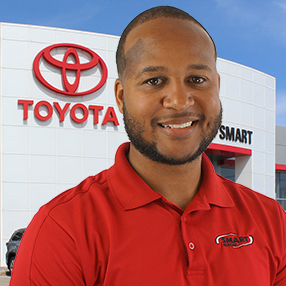
“Almost all the new Toyotas we offer come equipped with ‘Toyota Safety Sense (TSS),’” he says. “TSS is a package of onboard safety features that are constantly running to keep drivers and their passengers as safe as possible while they’re on the road.”
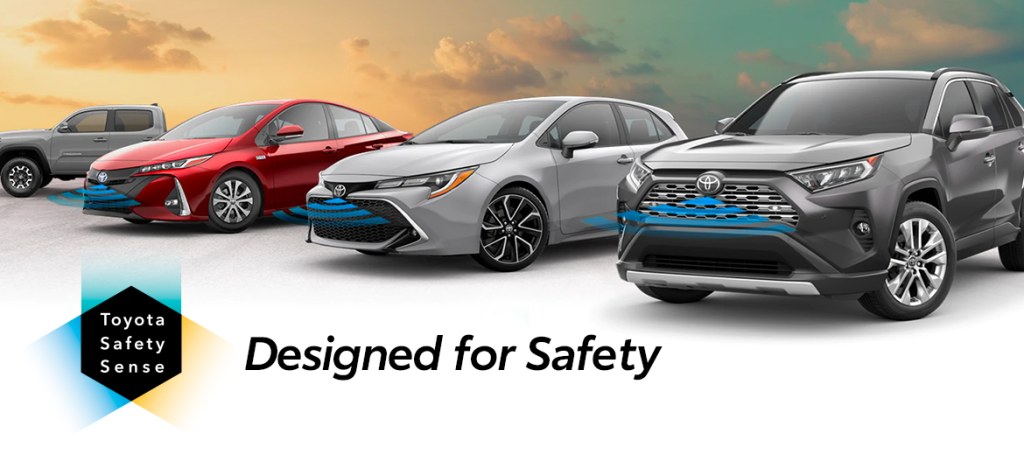
Pre-Collision. Auto High Beams. Dynamic Radar Cruise
TSS – as well as safety systems employed by other vehicle manufactures – includes features like a pre-collision system with pedestrian detection, a lane departure alert, automatic high beams, dynamic radar cruise control, and road sign assist. All of these safety features and more now come standard not only on Toyotas but on newer vehicles from a wide array of manufactures.
“These advanced systems monitor driving conditions in amazing ways,” says Jackson. “It would be great if they never had to react to potentially dangerous stimuli, but let’s face it, we all have had our share of near-misses!”
Jackson says a coworker recently learned first-hand just how well these new safety features work.
“My coworker’s wife was driving on the beltline, which is an exercise in defensive driving to begin with,” Jackson says. “He was riding shotgun. Suddenly a car weaved in front of them and the pre-collision system gave off an alert and the system kicked in to slow the car down to avoid a mishap. While the driver – prompted by the alert – applied the brakes quickly, the monitoring system actually beat her reaction time.”
Jackson says the blind spot monitoring mirrors have helped to avert many close calls, and is probably the most relied on safety feature. “They’re very prevalent in many makes and models. I hope very soon they become standard features because they truly prevent thousands of accidents.”
Safety Experts Praise Blind Spot Monitors
With nearly 10 percent of vehicle accidents being lane-changing crashes, blind spot monitoring mirrors can be a very useful tool. The Insurance Institute for Highway Safety (IIHS) reported that blind spot monitoring reduced lane-changing accidents by 14%. Moreover, it reduced injuries from lane-changing crashes by 23%.
While the entire safety system can be turned off, Jackson says using them as a precaution is the ideal option. While TSS and other manufacturers’ safety systems are definite assets to drivers, passengers, and pedestrians, Jackson says, “drivers still need to rely on their own senses whenever they get behind the wheel.”
About Smart Motors
Smart Motors was founded in 1908 by O.D. Smart and is one of the nation’s oldest automotive dealerships, is the mid-west’s largest hybrid dealer and one of Wisconsin’s largest volume Toyota dealers. Located at 5901 Odana Road, Smart Motors is Wisconsin’s only two-time President’s Cabinet Award recipient from Toyota Motor Sales for superior customer service & sales volume. Dealership history.
Engine Oil: Regular vs Synthetic
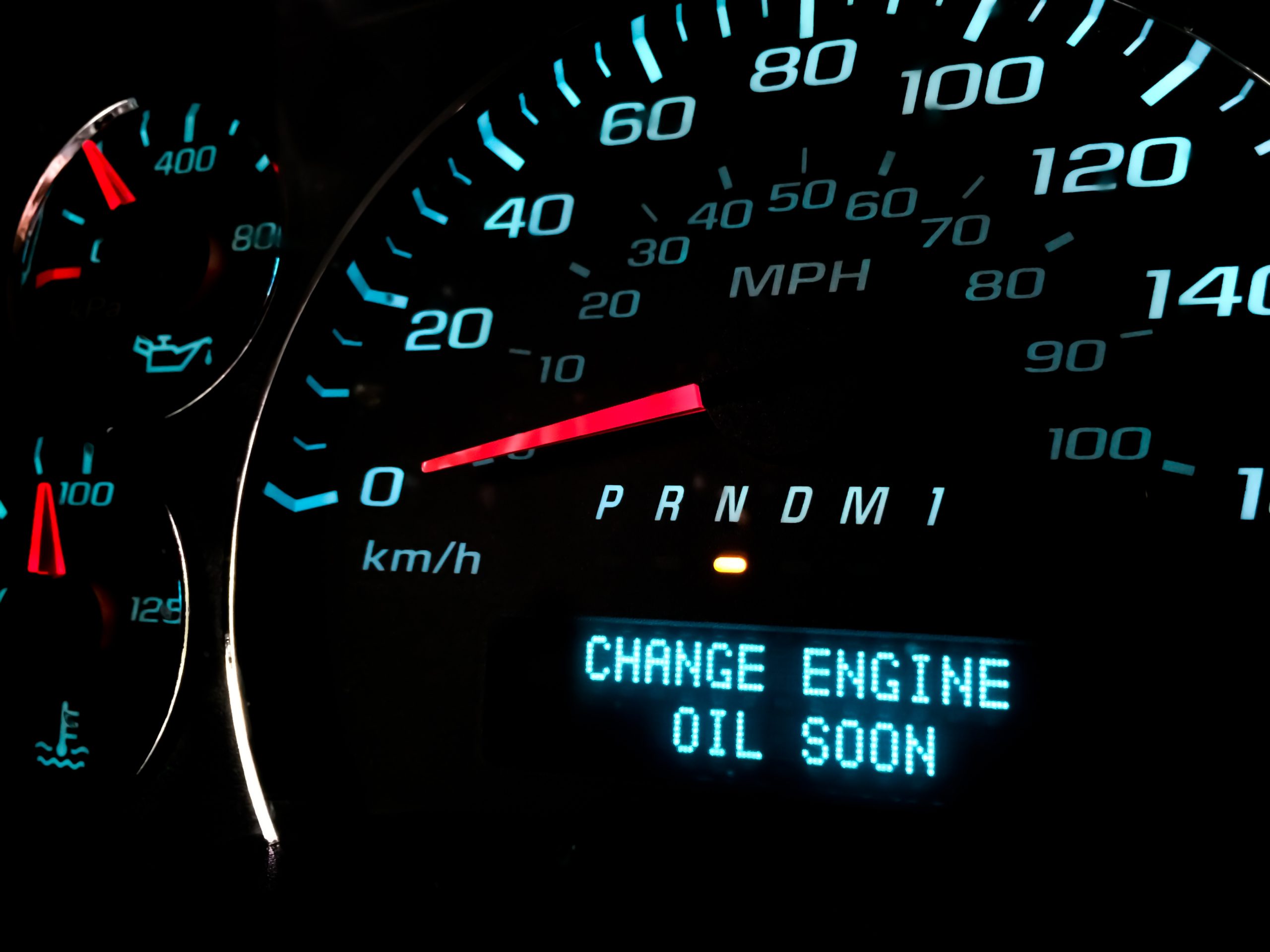
What type of oil is best for my car?
You’re driving along, just minding your own business. Out of the corner of your eye you spot a little sticker on your windshield provided by the service station a while back. You squint at it briefly, trying to keep your eyes on the road. What does it say? You reach your destination, park, and as you exit the car you read the sticker more closely. Dang! Oil change time!
Regular Auto Maintenance is the Key
No biggie, you think. Oil changes don’t take very long and often times you don’t even need an appointment. So a few days later, you drive to your local service station, pull in and tell the service advisor, “time for an oil change”. They respond, “Great. Regular or synthetic?
Dumbfounded, you ask what they would recommend. Wouldn’t it be best to know what oil is best for your particular vehicle and why?
“Having your oil changed regularly is one of the easiest things you can do to preserve the life of your vehicle,” says Luis Roman, Assistant Service Manager at Smart Motors. “Oil is your vehicle’s lifeblood.”

Roman says oil is what keeps the components of the engine working efficiently. It also reduces the accumulation of varnish and carbon from collecting in the engine. In order to protect and keep your engine running smoothly, oil collects heat, varnish and carbons. By doing this, and over time, the oil becomes dirty and the additives get depleted. When this happens, the oil is no longer helpful in maintaining the health of the engine.
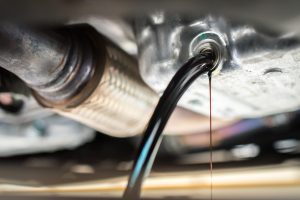
“That’s why you need to change the oil regularly,” says Roman. “And don’t forget to change the oil filter too. Without regular maintenance your engine will seize up and die. And you really don’t want that to happen!”
What Is The Difference Between Regular And Synthetic Car Engine Oil?
But back to the hard question: regular or synthetic oil? There actually is an easy answer for most car owners. Synthetic oil should be used in newer cars, as most engines are manufactured to operate best with it.
“Synthetic oil is better than conventional oil when it comes to longevity,” says Roman. “It’s also able to handle extreme high temperatures without breaking down.”
So, if synthetic oil is the way to go, why offer conventional oil? Why not use synthetic oil in every vehicle?
“Not a good idea. Engines in older vehicles were designed for regular/conventional oil usage,” says Roman. “It’s best to follow the manufacturers recommendation and stick to it. The last thing you want to do is void the manufacturer’s warranty by using an oil not recommended for your specific vehicle.”
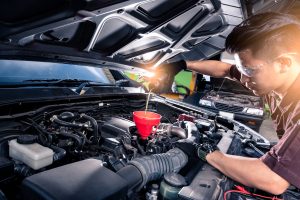
Vehicle Owners Manual
Roman says the easiest thing for consumers to do is consult their vehicle’s owner’s manual. It should specifically state what type of oil is best for your engine. You can also consult with the mechanics at your dealer or service station. They will be able to recommend the proper oil, plus they might share the good news that you can drive further than the traditional 3,000 miles before you’re due for another oil change.
About Smart Motors Toyota
Smart Motors was founded in 1908 by O.D. Smart and is one of the nation’s oldest automotive dealerships, is the mid-west’s largest hybrid dealer and one of Wisconsin’s largest volume Toyota dealers. Located at 5901 Odana Road, Smart Motors is Wisconsin’s only two-time President’s Cabinet Award recipient from Toyota Motor Sales for superior customer service & sales volume. For more information visit their history page.
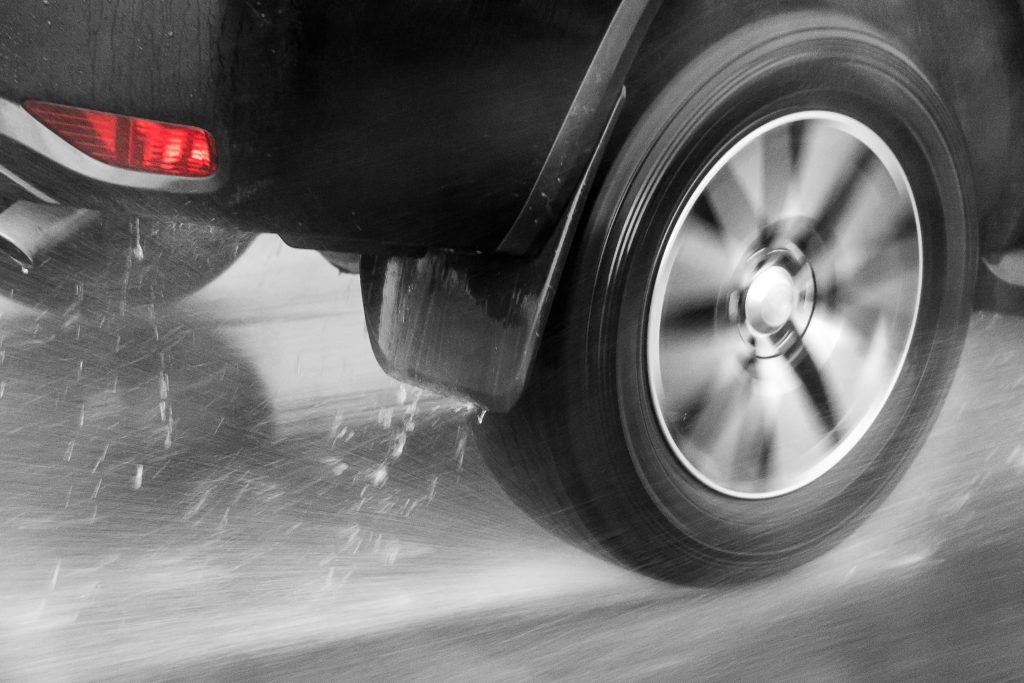
It happens before you know it
You’re driving along on an overcast day. You’re minding your speed, traffic is light, and there doesn’t seem to be anything particular to be concerned about. Suddenly it begins to rain. You know the drill: turn on your windshield wipers, make sure your headlights are on, and tap the brakes to cancel the cruise control. These are all common sense actions all drivers should take even while driving in a light rain. All of a sudden you experience a very odd sensation. Your vehicle seems to be floating above the road. You know what’s happening. It’s happened before. You’re hydroplaning. And hydroplaning can be just as dangerous as sliding across a frozen highway.
Hydroplaning usually occurs within the first 10 minutes of a rainstorm when oils, dirt and debris begin to wash off the surface of the road. It also happens when there is too much water for the tread of your tires to scatter, so your vehicle is literally lifted above the surface of the water. What do you do? Take your foot off the accelerator, don’t brake, and wait for your tires to slow down to a point where they can handle dispersing the water. Continue on at this slower speed until the storm lets up.
Your tire tread depth is critical
“Having quality tires with the proper amount of tread is one of the best things a driver can do to prevent hydroplaning,” says Robert Jordan, Assistant General Manager & Service Director at Smart Motors. “A lot of people wait until winter is approaching to change their balding tires, but we recommend you change your tires at 4/32” remaining tread, regardless of the time of year, so that you don’t experience a lag in wet weather performance.”

100-Year Flood
Hydroplaning is just one of the dangers of driving in heavy rains, as many Wisconsinites might have learned in 2018 when we experienced the “100-year flood” in which up to 20 inches of water was collected in certain areas. At Smart Motors in Madison, well over 100 flood damaged vehicles were towed in after the waters subsided to a navigable degree. Owners were hoping against hope their cars and trucks could be repaired. “Time and time again, the service department had to break the news to guests that their car or truck was totaled,” says Jordan. “In fact, the totaled vehicles far outnumbered the ones we could repair.”
Jordan says the majority of the totaled vehicles experienced water getting into the engine, which can cause irreversible damage. Jordan says, unfortunately, there is no water-depth rule. He says you don’t need to drive through a 12” puddle to cause damage. Even in shallow water, all it takes is just the right splash to find its way into the engine and ruin the vehicle.
Prevention & Common Sense Make Sense
Preventing water damage can be tricky and certainly not foolproof, but Luis Roman, Assistant Service Manager at Smart Motors says there are some measures drivers should take if there is a threat of flooding.

“First of all,” he says, “If you don’t absolutely have to drive in flood-like conditions, don’t!” Also, remember the National Weather Service trademark phrase; “Turn Around. Don’t Drown.”
If there are flood warnings, the first consideration for a driver is to move the vehicle to a higher ground if that is an option. If this is not an option, Roman says to leave the vehicle where it is.
If you are on the road during flood conditions, exercise extreme caution and a use a lot of common sense. Roman says if you can’t see the road because there’s so much standing water, don’t risk driving through it. “You can’t determine water depth without going in,” he says. “My suggestion is to pull over safely and observe other vehicles that may brave their way through the flooding.” Roman also warns during a flood, there may no longer be any roadway under the water and you could drive into an impromptu river. If the water is over 12″ in depth, it could sweep a car away.
Helpful hints for driving in rainy weather
Roman offers these additional helpful hints:
• If at all possible, wait to embark on your trip until the weather improves.
• Check your tires periodically and replace them if the tread is worn to a dangerously low level.
• Slow down
• Do not use cruise control
• Turn on your headlights. In some cases you might even want to turn on your hazards.
• Definitely use your windshield wipers. Replace them if they are damaged or worn.
• Maintain a safe distance from other vehicles.
• Avoid heavy or sudden braking.
• As mentioned above, be wary of standing water.
• If you’re hydroplaning, step off the gas and try not to brake.
• Ventilate your vehicle to prevent windows from fogging up.
About Smart Motors
Smart Motors was founded in 1908 by O.D. Smart and is one of the nation’s oldest automotive dealerships, is the mid-west’s largest hybrid dealer and one of Wisconsin’s largest volume Toyota dealers. Located at 5901 Odana Road, Smart Motors is Wisconsin’s only two-time President’s Cabinet Award recipient from Toyota Motor Sales for superior customer service & sales volume. For more information visit theircompany history.
Summer Road Trip & Vehicle Maintenance Tips

Dreaming of the great outdoors and pondering the perfect destination for your next summer road trip with friends or family is exciting. Is it a lake house, the beach, or perhaps visiting as many Wisconsin state parks as possible in a two-week period? Regardless of your ultimate destination, the heat of summer can be just as hard on a vehicle as the freezing temperatures of winter. And just like its seasonal counterpart, summer is not a time when one would like to experience any maintenance drama. The mere thought of any component of a vehicle overheating, a belt or hose drying out, cracking, or breaking, or the A/C suddenly going out is a bummer. One does not want to be baking in a sweltering hot car during the long days of summer.
Vehicle Summer-ization for Summer Road Trips
“Wisconsinites know how important it is to winterize their vehicles, but often they neglect to ‘summer-ize’ them, too,” says Luis Roman, Assistant Service Manager at Smart Motors in Madison. “While some things can easily be done by the owner, there are also some where a service professional comes in handy.”

Roman says the maintenance in general has become increasingly important over the past few years. With both new and previously owned vehicles being in short supply – obtaining a new car, truck or SUV can take six months or more – staying on top of seasonal upkeep is paramount.
“In the long run,” says Roman, “it’s going to be much more economical to make minor repairs than it is to try to jump into a different new or used vehicle.” Roman says $500 for something like a radiator flush or a brake repair is not going to hurt your wallet quite like the $500 per month you could face if you’re forced to purchase a new vehicle in the current economy. He says there are many steps one can take to be proactive with “summarizing” to avoid drastic situations.
Proactive Car And SUV Maintenance
First, he suggests, is to have a qualified service technician thoroughly inspect your vehicle’s HVAC (heating, ventilating and air conditioning) system at least once a year. Often you can request this service in conjunction with another service such as an oil change.
Typical A/C Service includes;
• A visual inspection of hoses, lines, seals and other components for leaks as well as inspecting the drive belt for cracks or damage.
• A check of pressures to test operation, refrigerant charge and outlet temperatures.
• If the system is found to be low on refrigerant, a leak test is performed to find the source of the leak. Keep in mind if your vehicle is leaking refrigerant, it is damaging the ozone layer.
• A/C service should also include a check of the compressor’s drive belt and tension.
These measures should be enough to get you comfortably through the heat, but Roman says his team is trained to offer additional measures that will help your car stave off the heat of the street. Additional procedures either the vehicle owner or service technician can perform are:
Road Trip Checklist
• Check the level and strength of the coolant. A low coolant level may allow your engine to overheat. Make sure the coolant reservoir is filled to the proper level. Wait until the engine has cooled to check the level inside the radiator. If low, add a 50/50 mixture of the specified coolant and water.
• Make sure the cooling fan works. The electric cooling fan should come on when the air conditioner is turned on to MAX. No fan may mean a defective fan motor, relay or electrical problem.
• Battery evaluation. Batteries are lasting longer than they used to but the key with a battery evaluation is in the testing which gives both the available cold cranking amps vs. what the battery is rated for and the second is a battery health check which indicates potential battery life and can often predict a battery failure before there are symptoms. Hot weather is actually harder on batteries than cold weather because it increases the rate of evaporation of the liquid electrolyte inside the battery.
• Change the oil. Replacing old dirty oil with fresh oil can increase the lubrication protection for your engine.
• Check or replace the windshield wipers. Natural rubber wiper blades have a limited life of a year or less. Sun exposure, extreme heat and cold all age the rubber and cause it to become hard and brittle.
• Check tires. Check the tire for wear, uneven wear, age cracks or damage. Check the inflation pressure in all the tires, including the spare. Underinflated tires make the tires run hot and increases the risk of a blowout.
Being Prepared is the Key
Lastly, Roman says there are a few steps vehicle owners can do themselves to stay cool:
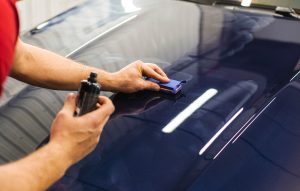
• Wax the body. Your vehicle’s body should be waxed or sprayed with some type of protectant to help shield the paint from the ultraviolet rays from the sun, and summer smog in urban areas.
• Keep your cool. Buy a sun shade for the windshield to reflect light so the interior doesn’t get so hot if the vehicle is parked in direct sunlight. Also, close the sunroof sunshade, and leave the windows cracked so hot air can escape. This can lighten the cooling load on the air conditioner when the vehicle is first started, and prevent you from getting a hot seat or burning yourself on hot interior surfaces.
• Protect yourself. Wear a hat and sun screen, and carry a bottle of water in the car in case you get stuck for a long period of time in traffic or have a break-down on a hot day.
Roman says these precautions should be enough to keep you and your vehicle cool. Of course bad things happen at the absolute worst time, but taking some simple preventative measures should drastically lower the risk of them happening to you.
About Smart Motors Toyota In Madison, WI
Smart Motors was founded in 1908 by O.D. Smart and is one of the nation’s oldest automotive dealerships, is the mid-west’s largest hybrid dealer and one of Wisconsin’s largest volume Toyota dealers. Located at 5901 Odana Road, Smart Motors is Wisconsin’s only two-time President’s Cabinet Award recipient from Toyota Motor Sales for superior customer service & sales volume. For more information, check out their history. visit https://www.smarttoyota.com/our-history.html
April is National Car Care Month
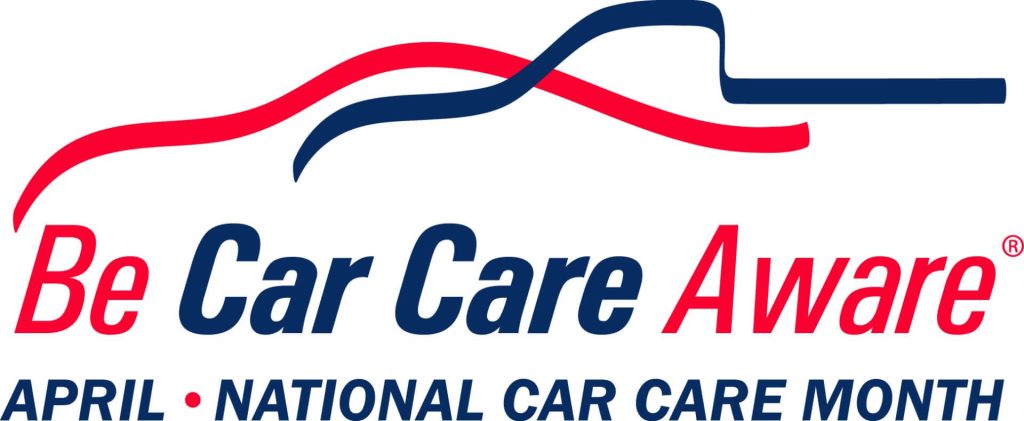
Cars, just like humans, need an annual checkup, and there’s no better time to do that than during National Car Care Month, which occurs throughout April.
National Car Care Month aims to get cars healthy and running in tip-top shape to keep automobiles functioning efficiently through the increased driving that occurs in the summer months. Some simple checkups can increase gas mileage and add to the lifetime of a vehicle.
“Car Care Month is just a really good time to make sure your car is running its best,” says Jason Vasen, Master Diagnostic Technician at Smart Motors. “A car is an investment; so paying attention and taking proper care of it is much better than paying thousands of dollars to replace it later.”

Vasen cites several common trouble areas as spots to pay attention to during Car Care Month and any other time of the year. Tires, filters, oil, interior, and exterior.
“The great part about these is just about anyone can perform these functions at home—specialized tools aren’t really necessary,” says Vasen.
Tires
When tires are not correctly inflated, they just don’t perform properly. With a simple tire gauge that costs under $10, people can see if tires are at the manufacturer’s suggested level. The vehicle suggested inflation level is usually found on a sticker inside the driver’s side door or the glovebox or in the owner’s manual.
And it is good to be at the proper level. For every three PSI (Pounds per Square Inch) below that level a car tire loses, it becomes one percent less efficient and wears 10 percent faster. These numbers add up cumulatively, so if a car is 10 PSI under, that’s over three percent of wasted fuel every time someone gets behind the wheel. If someone doesn’t want to get a tire gauge, just keep in mind, looks aren’t deceiving. If the tire looks low, it is most likely low.
Filters
The vast majority of vehicles have internal combustion engines. And the science behind combustion requires both a fuel source and air. If this air isn’t clean, it will hamper the combustion process, which is why cars have engine air filters. However, if these filters are dirty, they will let these impurities through and decrease efficiency by up to seven percent.
To check the air filter, look in the owner’s manual and find out where the filter is located. Then pop open the hood and remove the filter. Hold it up to the sun; if light streams through, the filter is good. If not, drop it on the ground several times and retest. If sunlight is still not visible, a new filter is required.
Oil Change & Tire Rotation
Everyone knows cars need oil changes, but why? The purpose of oil in a car engine is to keep all internal parts lubricated and running smoothly. As oil ages or gets used, it breaks down and its lubricating properties diminish. An oil change replaces the dirty oil and allows parts to be freshly lubricated with new oil.
Almost all models of cars include an engine oil dipstick to allow people to check the vehicles engine oil level. Locate the dipstick, pull it out, and place it back in the engine, ensuring it goes all the way down. Pull it out, and without changing the orientation, see where the oily part meets the dry part, if it’s between the two marks on the stick, the oil level is good.
Exterior
A winter season full of salt and sand can do a number on the exterior and can even lead to rusting. As temperatures rise, it’s advised to visit a good car wash, one that gets all of the random debris not only off the car, but from underneath the car as well. Waxing a car helps the exterior paint last longer and shine. Instead of applying one heavy coat of wax, apply several thin coats, after the previous coat has cured. This technique will bring out the vehicles best color and depth.
Interior
A good thorough cleaning of carpet and upholstery will remove stains, and winter’s tracked in salty residue. This will leave the car clean and smelling fresh. A word of caution when cleaning windows, do not use a glass cleaner to clean the rear window, as this can cause damage to the rear window defogger heater wires.
Smart Motors
Founded in 1908 by O.D. Smart, Smart Motors is one of the nation’s oldest automotive dealerships, is the mid-west’s largest hybrid dealer and one of Wisconsin’s largest volume Toyota dealers. Located at 5901 Odana Road, Smart Motors is Wisconsin’s only two-time President’s Cabinet Award recipient from Toyota Motor Sales for superior customer service & sales volume. Dealership’s History.
When Roads Go To Pot… Holes
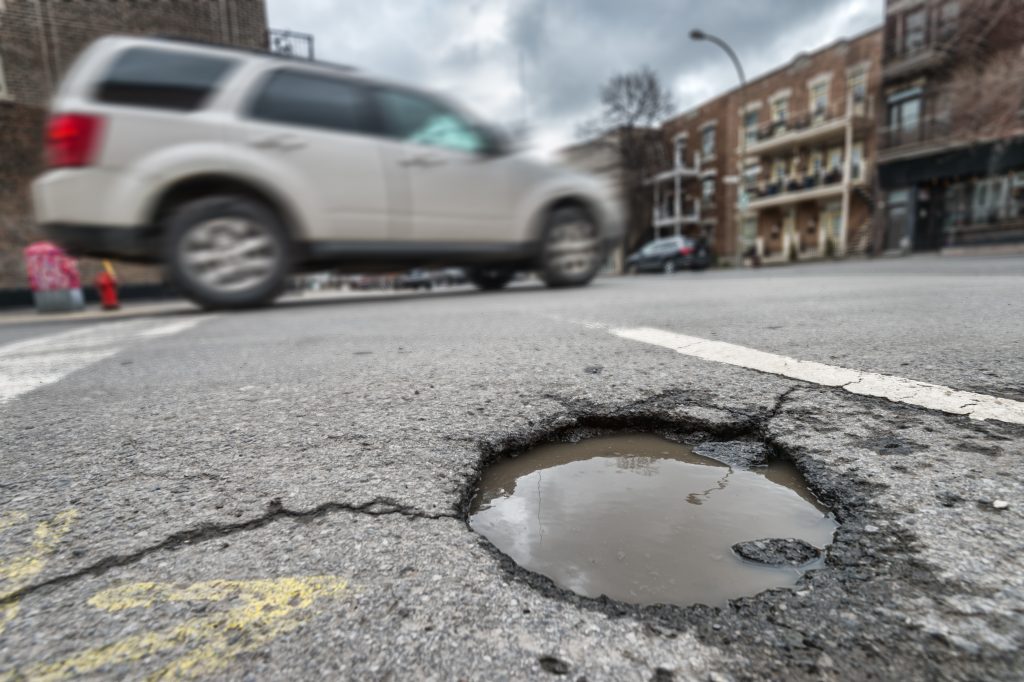
Potholes Can Cause a Lot of Damage
Spring time in Wisconsin is like when a bear comes out of hibernation. Daytime temperatures are pushing 50 degrees, Wisconsinites are sporting shorts and short sleeve shirts, but when the winter frost leaves our roadways we are left with those pesky “potholes” which can cause damage to our vehicle’s alignment. The constant freezing and unfreezing of water on roadways can wreak havoc, forming supersize potholes destroying the underside of your vehicle. The automotive specialists at Smart Motors service department have the following advice to help prevent and notice pothole-related damage.
Visible damage is the easiest to detect, but may not be the only indication your vehicle needs some attention. One obvious sign of tire damage is when a tire ‘bulges’; which occurs when the steel/fiber ply belt in the sidewall of a tire breaks due to a heavy impact. Luis Roman, Assistant Service Manager at Smart Motors Service Center, says even if your tires don’t have bulges does not necessarily mean you are free from the damage of potholes.

Warning Signs of Pothole Damage
If your vehicle pulls to one side, or your steering wheel is visibly off center, Roman suggests being on the safe side and schedule an appointment with a reputable automotive service center and getting an assessment. This way, the vehicle’s alignment and other signs of damage can be analyzed and fixed before they become a major problem. Repair costs can vary greatly depending on the extent of damaged parts; from a $200 strut to several thousand dollars for an entire suspension system and cradle.
Roman also offers these tips to help protect vehicles against the jarring experience of a pothole encounter:
Tips to Protect your Vehicle from Pesky Potholes
• Maintain full air pressure in all tires to provide as much cushion as possible between the pothole and the rim of the tire. Consult the vehicle owner’s manual for the correct pressure.
• Watch for potholes by leaving plenty of space between your vehicle and the one in front of you.
• If a pothole cannot be avoided, slow down BEFORE hitting the pothole. Hitting a pothole at high speed increases the chance of damage to tires, wheels, shocks, struts or springs.
• When driving over a pothole-filled road, hold the steering wheel firmly to avoid losing control.
• Do NOT brake when directly over a pothole. Applying the brakes causes the car’s weight to shift to the front of the wheel and can increase damage from the impact.
• Beware of water that may be concealing a deep pothole.
About Smart Motors
Smart Motors was founded in 1908 by O.D. Smart and is one of the nation’s oldest automotive dealerships, is the mid-west’s largest hybrid dealer, is one of Wisconsin’s largest volume Toyota dealers and is Wisconsin’s largest Toyota Certified Used dealer. Located at 5901 Odana Road, Smart Motors is Wisconsin’s only two-time President’s Cabinet Award recipient from Toyota Motor Sales for superior customer service & sales volume. For more information visit their history page.



